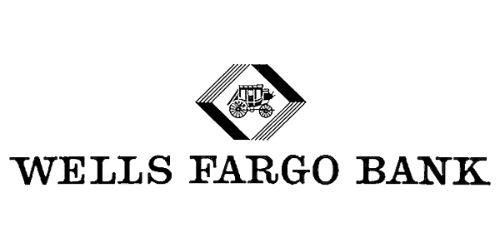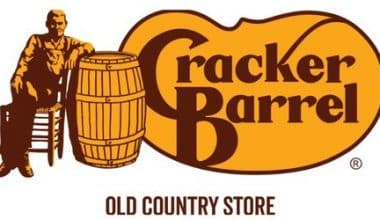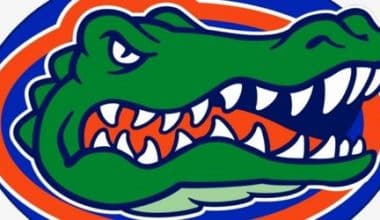The bank with the Wells Fargo logo is a safe place in a world full of dangers and things that can’t be planned for. The logo demonstrates that business is done ethically, that laws are upheld, and that practical improvements are implemented to improve consumers’ lives.
The company is known as Wells Fargo Banking Holding after its founders, Henry Wells and William Fargo. They made it possible by starting a postal finance company in 1852 and merging it with Norwest in 1998. The “parent” of many contemporary services is this bank. Since he created a standard customer service structure, he was the first to put ATMs in stores and supermarkets. Wells Fargo also started online banking in the United States by letting cardholders check their accounts from afar. In this article, we will be more into the evolution of the Wells Fargo logo, the company’s history, the color, font, etc.
Evolution of the Wells Fargo Bank Logo
The famous equine stagecoach logo represents Wells Fargo bank’s principles, history, and reputation. It was initially shown as a logo in black and white, and it has since been used as an icon. This is a big part of the bank’s visual identity because the bank once owned the largest network of postal carriages and operated them for both fast mail delivery and moving people.
Wells Fargo Bank Logo 1852 – 1960
When William G. Fargo and Henry Wells resolved to assist the residents of San Francisco in safely moving goods, the company’s history and visual identity began in 1852. They established a cutting-edge startup with their names on it to accomplish this. As the company’s list of services grew, steel storage facilities that were good at keeping thieves out started to appear. But the early years of the Wells Fargo company were most precise in its logo.
Wells Fargo 1960 – 1962
The Wells Fargo logo during the start of the 1960s was white and oval with black double outlining. In the center, a stagecoach was depicted in black and white in great detail. A ring The An object, comprising the words “WELLS FARGO BANK” (above) and “AMERICAN TRUST “COMPANY”The postal stagecoach has been put in the icon section because it is a constant sign of Wells Fargo. (below), both in fine, lengthy serifs encircled the object.
Due to the hazy ink, the letters barely touched. The year the business was started, 1852, was written on the right and left sides of the vehicle. Because clients trusted the financial institution with their money and precious metals, particularly gold, the stagecoach’s appearance on the emblem was no accident. Treasure chests were transported to different settlements via trains, steamboats, and horse-drawn wagons.
Wells Fargo Logo 1962 – 1996
The stagecoach changed to black and small in 1962. The oval was replaced with a white rhombus with a unique frame made up of two solid black stripes and two fragments in the shape of parallel lines after all the inscriptions surrounding it vanished. The business’s name was written at the bottom in a long, even line. Serifs and capital letters were used in writing.
Wells Fargo Bank Logo 1996
The first badge of the holding shows a stagecoach called the Concord Coach, which was made to handle rough roads. This style of transportation stood out because it had a damask and genuine leather inside, a curved frame, and well-balanced wheels.
The Wells Fargo bank logo artwork is highly complex, including human silhouettes. In peace, these couriers carried gold bars, money, checks, and other valuables. Since the bandits were well-armed, they did not need to be fearful of them. However, one thief was successful in robbing Wells Fargo 27 times.
Where there were no railroads, stagecoaches were utilized. They went through deserts, mountain passes, and quicksands while climbing the most dangerous terrain to show how reliable expedited delivery is.
Wells Fargo Bank Logo 1996 – 2019
In 2008, the renowned American company merged with Wachovia, a major US financial network. The logo was modified, becoming square in the current design. A wordmark appeared inside the red area. The letters were uppercase and yellow. The font has a regal appeal because of the long serifs.
The postal stagecoach has been placed in the icon section as a constant representation of Wells Fargo bank. They started to paint and detail his image more. The drawing was done as realistically as possible, thanks to the artists’ attention to detail. The bank’s motto, “Together we’ll go far,” was written in the upper right corner.
Wells Fargo Bank Logo 2019 – today
Wells Fargo has been in several controversies, accused of fraud many times, and fined many times for different things. Under the slogan “This is Wells Fargo,” the company’s leaders started an extensive campaign to fix the brand’s bad reputation. The logo and symbol were updated as part of a rehabilitation effort.
The advertising firm BBDO-San Francisco devised a plan to help the bank move forward. True, all that was needed to change the sign was to paint the words yellow and leave everything else the same. The horses were down to three, and the stagecoach changed to black and white.
A six-horse harness was designated as a well-known Wells Fargo bank logo in 1852. It is related to postal services and reflects the bank’s past. A black horizontal line divided the organization’s name from the one underneath.
The banking institution’s past is not reflected in the current symbol. It appears to be a plain red square with the words “Wells Fargo” inscribed. Even the most recent attempt to improve its image failed: the holding never changed its visual identity, even though the marketing campaign’s goal was to show progress.
The wordmark for the oldest banking organization is written in the Robert Besley-designed Clarendon Bold font. This font was created in 1845, the same year as Wells Fargo. The square under the uppercase Antiqua letters is dark red (#CD1409), and the letters are bright yellow (#FFFF00).
What Was Wells Fargo before a Bank?
Henry Wells and William G. Fargo teamed up with several other investors on March 18, 1852, in New York City to establish their eponymous company, which is now among the biggest banks in the world.
When gold was found in California in 1849, the need for cross-country shipping went through the roof. Wells and Fargo decided to seize these excellent chances. As of July 1852, their business
The first freight shipments from the East Coast to mining camps were dispersed throughout northern California. To convey gold dust, crucial documents, and other precious freight, the firm made contracts with separate stagecoach companies as quickly as possible. It also performed the functions of a bank, purchasing gold dust, dispensing paper bank drafts, and disbursing loans to support California’s expanding economy.
The Overland Mail Company, sometimes known as the “Butterfield Line,” was founded in 1857 by Wells Fargo & Co. It offered regular mail and passenger service over an ever-increasing number of routes. In the boom-and-bust 1850s, the business built a good name for itself, and the traditional stagecoach became its well-known symbol. For a fee, Wells, Fargo, and Co. would dispatch a worker on horseback to deliver or pick up a box or message.
1966-1910
Wells Fargo & Company joined with several other “Pony Express” and stagecoach lines to become the undisputed Western transportation leader. Three years later, the corporation started shipping its freight by railroad once the construction of the transcontinental railroad was completed. By 1910, its transportation system linked 6,000 places, from cities and farms on the East Coast to ranching and mining hubs on the West Coast and lumber factories in the Pacific Northwest.
After separating from the freight business in 1905, the company’s banking division joined with the Nevada National Bank and moved its headquarters to San Francisco. Wells, Fargo & Co. ended as a transportation and delivery concern when the American government nationalized the company’s shipping routes and amalgamated them with the railroads into the American Railway Express during World War I. The banking center was devastated by a significant earthquake in April of the following year, but the vaults were unharmed, and activity at the bank kept expanding. The Wells Fargo Bank American Trust Company, shortened to Wells Fargo Bank in 1962 after two subsequent mergers, grew to become and has remained one of the largest banking organizations in the United States.
What is Wells Fargo Famous For?
As of March 2022, Wells Fargo was ranked third among the top five banks in the country, after JPMorgan Chase and Bank of America.
The corporation claims that its assets total more than $1.92 trillion. The bank has more than 265,000 workers and serves more than 64 million customers nationwide. As of July 2022, the bank’s market capitalization was $165 billion.
In the banking industry, the highest point of intangible business is when assets are moved from less valuable uses to more valuable ones. However, several factors still set Wells Fargo apart from its main rivals in the United States, starting with its size and reach. And how does the bank generate revenue? One method is charging a greater interest rate on loans than on borrowings. However, it involves more than merely making money through interest. This article examines how Wells Fargo became one of the nation’s central banks.
#1. Investment and Wealth Management
This division helps high-net-worth individuals (HNWIs) and business clients manage their money, invest, and save for retirement, among other things. These services include financial planning, credit, and private banking.
#2. Retail Banking
The wholesale banking branch of Wells Fargo looks after the financial requirements of both domestic and international firms. Businesses like corporate and business banking, commercial real estate, insurance, and credit risk are included in this category.
#3. Neighborhood Banking
Individuals and small businesses use this bank branch for their everyday banking needs. Checking and savings accounts, loans, and mortgages are a few services. The bank serves these customers through its components and automated teller machines (ATMs).
#4. Serving both the Wealthy and the General Public
Financial services for wealthy people are referred to as wealth and investment management. This part of Wells Fargo’s business helps people in many ways, like setting up foundations or solving problems with inheritances before they happen. Every affluent person knows that maintaining wealth can take almost as much effort as acquiring it, at least in the United States. In 2021, Wells Fargo made a $2.2 trillion net income from wealth management. Even if it seems essential, it is the least profitable of the bank’s three business areas.
The word “wholesale” has a slightly different connotation in the banking industry than elsewhere. Many banks don’t even employ the phrase. But at Wells Fargo, it includes selling and underwriting asset-backed securities and other banking services for big businesses and other banks.
Growth of Wells Fargo
The expansion of the West was closely related to Wells Fargo’s growth. Wells, Fargo & Co. looked westward toward the gold rush, while other banks focused on Europe.
The bank helped start the Overland Mail Company, set up to make communication in the West as fast as it had ever been. In reality, Wells Fargo’s famous stagecoach logo has something to do with the Pony Express, which it took over in 1861.
After the transcontinental railroad was finished, Wells Fargo made it a point to use the slogan “Ocean-to-Ocean.” In 1888, the bank served about 2,500 locations in about 25 states. Wells Fargo & Company was the bank’s name until it changed to Wells Fargo & Company in 1969.
What Banks did Wells Fargo Take Over?
Wells Fargo has purchased several banks to support its expansion. It amalgamated with the Nevada National Bank in 1905 and then with the Union Trust Company in 1923.
In 1986, Wells Fargo bought Crocker National Bank, a big competitor, for almost $1.1 billion. Because of this deal, Wells Fargo became one of the most powerful banks in the country. Wells Fargo purchased Barclays Bank of California for $125 million in 1988.
In the 1990s, Wells Fargo bought several banks. In 1996, it merged with First Interstate Bancorp, and in 1998, it joined Norwest. It also made several smaller purchases. In 2008, the Wachovia Corporation was bought for $15.1 billion. This was the next important deal.
History of Wells Fargo Company
After gold was found in the west, two wealthy businessmen from New York, Henry Wells and William Fargo saw a vast opportunity and started the Wells Fargo company. The two, who had Wells Fargo & Co., were officially set up on March 18, 1852, by American Express, which was started in 1850. The two main goals of the company were banking and transportation.
The Wells Fargo & Co. Express wanted to provide “express” services to the many miners who were moving to a part of California without railroads and freight services to businesses. Its bank, Wells Fargo & Co. Bank, offered financial assistance, freight, precious goods, and mail forwarding.
Wells Fargo opened its first office in San Francisco within a year. Soon after, it opened offices in Sacramento, Monterey, and San Diego, and within a short period, in nearly every mining town in California.
Early on, Wells Fargo did not run its stagecoaches; instead, it subcontracted with and made investments in those already in operation. They primarily operated as an express firm. In 2006, well-known wagon, carriage, and stagecoach expert Ken Wheeling wrote the following:
1848
The shipment of gold from the Philadelphia Mint was one of its first and most significant jobs. Wells Fargo continued to do this job until April 1854, when the United States Mint opened in San Francisco. Mail delivery was another vital activity handled by Wells Fargo. Although California had its first post offices in 1848, the public preferred express services because they were more affordable and quick than the U.S. Mail.
By 1855, mining in California had started to slow down, and many banks had failed. But Wells Fargo didn’t give up. They worked hard and quickly became the West’s most oversized mail and banking company. While they were the only ones shipping large amounts of gold, they continued to help miners by delivering mail and supplies.
In 1857, Wells Fargo helped start the new Overland Postal Company, which sent mail between St. Louis and San Francisco every two weeks. Men with significant stakes in Wells Fargo, American Express, United States Express, and Adams Express founded the Overland Mail Company, four of the top express firms. John Butterfield, who helped start American Express, was in charge of the new company, and Wells Fargo was its primary lender.
Read Also: SpaceX Logo: What is the Real Meaning of the Logo?
The Overland Mail sometimes called the “Butterfield Line” after its president, went through El Paso, Tucson, and Los Angeles before reaching San Francisco. The route was 2,757 miles long. It took around 25 days to traverse the deserts and mountains, with only brief rests on switching horses or pausing for food.
Even though the Overland Mail Company wouldn’t let them ship anything valuable, Wells Fargo often used its wagons and guards. Gerald T. Ahnert, a well-known expert on the Overland Mail, brings up John Butterfield’s Order No. 8, which says, “No money, jewelry, banknotes, or valuables of any kind would be allowed to be carried under any circumstances.”
When John Butterfield was removed from his position as Overland Mail president in 1860, Wells Fargo increased its stake in the business. By the beginning of the 1860s, Wells Fargo had 147 offices and was the only company in California that sent mail.
The route was altered after the Civil War started, traveling northward over the Great Plains and the Rocky Mountains before winding its way to California.
In 1866
Wells Fargo bought Ben Holladay’s Overland Mail Express and combined it with all the other stagecoach companies along the “Central Route” to make the biggest stagecoach company in the world. Almost all of the stage lines from Mississippi to California were under their control. Wells Fargo finally got its stage line up and running in 1867, when it put its logo on the side of a stagecoach. On April 20, 1867, they placed their first order with Abbot-Downing & Company for 30 Concord stagecoaches.
During the crazy stagecoach days, thieves and criminals mostly tried to steal from Wells Fargo. One of the most well-known of these was Black Bart, who robbed 28 stages before being caught. The James-Younger Gang, the Red Jack Gang, “Rattlesnake Dick,” and hundreds of other individuals also attempted to make a living by robbing stagecoaches; Black Bart was just one of them. The firm experienced 313 stagecoach holdups for $415,000 in the 1860s.
Read Also: BANK OF AMERICA LOGO: History, Facts and Values
The Gold Spike linked the Transcontinental Train’s tracks in 1869 as the railroad continued to plow through the west. As a result, many of Wells Fargo’s overland stage operations ended; however, they continued on a smaller scale, visiting several locations that the railroad had not yet reached. The company also started a train express service, which ran until the turn of the 20th century and ruled.
Bandits from both trains and stagecoaches targeted wells Fargo. The Central Pacific out of Oakland was held up in Truckee, California, in 1870, and seven masked men made off with $42,000 worth of gold and gold coin. This was the first significant train robbery. Because of this, Wells Fargo hired James B. Hume to be its Chief Detective. Hume spent 32 years working for the organization before rising to prominence as one of the nation’s top sleuths. During his administration, it was said: “The United States government and Wells Fargo are two institutions perilous for bad people to mess with.”
In 1904
Wells Fargo & Company moved to New York City. The following year, it split its banking business from its express business. Later, the Nevada National Bank and Wells Fargo Bank joined forces to form the Wells Fargo Nevada National Bank.
In 1908, Wells Fargo received the last command to “throw down the box” from a Concord stage. The robbers were immediately pursued, but this time in cars. Between Tonopah and Manhattan, Nevada, the final horse-drawn stage hauling goods for Wells Fargo ran in 1909.
The company’s express and banking services were affected by the many mergers and purchases over the years. After the Wells Fargo Express Company and the American Railroad Express Company merged in 1918, only the bank kept the Wells Fargo name.
Thanks to Wells Fargo & Co., approximately 6,000 sites offer banking services, with
The company also gives money to nine museums throughout the country that show off its rich history with real stagecoaches, gold nuggets, and other authentic and unique displays. Special tours and educational programs are available with reservations at these nine museums.
Where is Wells Fargo Presently?
Today, Wells Fargo is a major player. It is ranked as the fourth-most influential American bank by Forbes. Even though there was a big account fraud scandal, a $142 million class action lawsuit, and John Stumpf was banned from working at a bank again, this is still true. Congressmen on Capitol Hill accused Stumpf of turning Wells Fargo into a criminal organization.
One of the most significant physical banks in America is still Wells Fargo. The bank has made it clear that it is dedicated to the future and rebuilding client trust. According to Tim Sloan, chief executive officer and president of Wells Fargo, “Over the past 20 months, we have reinvented Wells Fargo by simplifying our business model, investing for the future, and improving our culture.” “While we have made significant progress, we know that more work must be done. This advertising campaign expresses how Wells Fargo is fundamentally a different firm today and how it feels like a new day.
Stagecoach Logo
Since the stagecoach is such an essential part of the company’s history, it was only natural to build the logo around it. The traditional illustrator John Rush’s artwork serves as the company’s current logo. It can be presented in either black and white or full color. Stagecoach photography may be used to create a powerful brand statement.
Symbol
The historical symbol is essential and easy to recognize, but in this day and age of simple, clean logos, it looks a bit old. Making matters worse, it is challenging to handle in print and digital media.
So, using its two-lined wordmark as a guide, the company chose a simpler logotype in 2008. In a red square, the firm name is written in yellow.
Because red and yellow were not viewed as acceptable for a financial institution because they were too vibrant and brilliant, when the square logo was unveiled, it caused a tremendous stir in the sector. But with time, everyone grew accustomed to the combination.
Font of the Wells Fargo Bank Logo
The Wells Fargo bank logo’s clear serif typeface is a member of the Arsher font family. Arsher combines the Antiques and Geometrics font families.
Color of the Wells Fargo Logo
Wells Fargo’s official logo brand standards say the two-color (yellow and red) logo is the best choice. Here, the backdrop is red (approximate hex: #CD1309), while the text is yellow (approximate hex: #FFFF00).
Where Did the Wells Fargo Come From?
Wells Fargo is the result of the merger of several large regional banks. Wells and Fargo started their namesake bank in 1852 to serve the growing number of gold miners and people who worked with them in California. At the time, California was in the early stages of becoming the most populous and economically powerful state in the union.
Wells Fargo grew steadily for more than 150 years before it merged with Norwest Corp. in 1998.
Ten years later, East Coast behemoth Wachovia was acquired by Wells Fargo. When you add them, Wells Fargo can now boast of having over 64 million clients nationwide.
Conclusion
There aren’t many logos as imaginative and appealing as the one for Wells Fargo Bank. While the Wells Fargo Bank logo reminds people of its significance, it also shows that business is conducted responsibly, that legal requirements are upheld, and that fundamental changes are made to better customers’ lives.
Related Articles
- Best Banks In Georgia: Top 15 Best Banks
- BEST SMALL BUSINESS BANK ACCOUNT: Top 13+ Options In 2023 (+ No Fees Picks)
- HOW TO WIRE TRANSFER MONEY: Procedures For Wire Transfer
- OVERDRAFT PROTECTION: Definition & How Does It Work
- WELLS FARGO BUSINESS ACCOUNT: 2023 Review, Fees & All You Need






